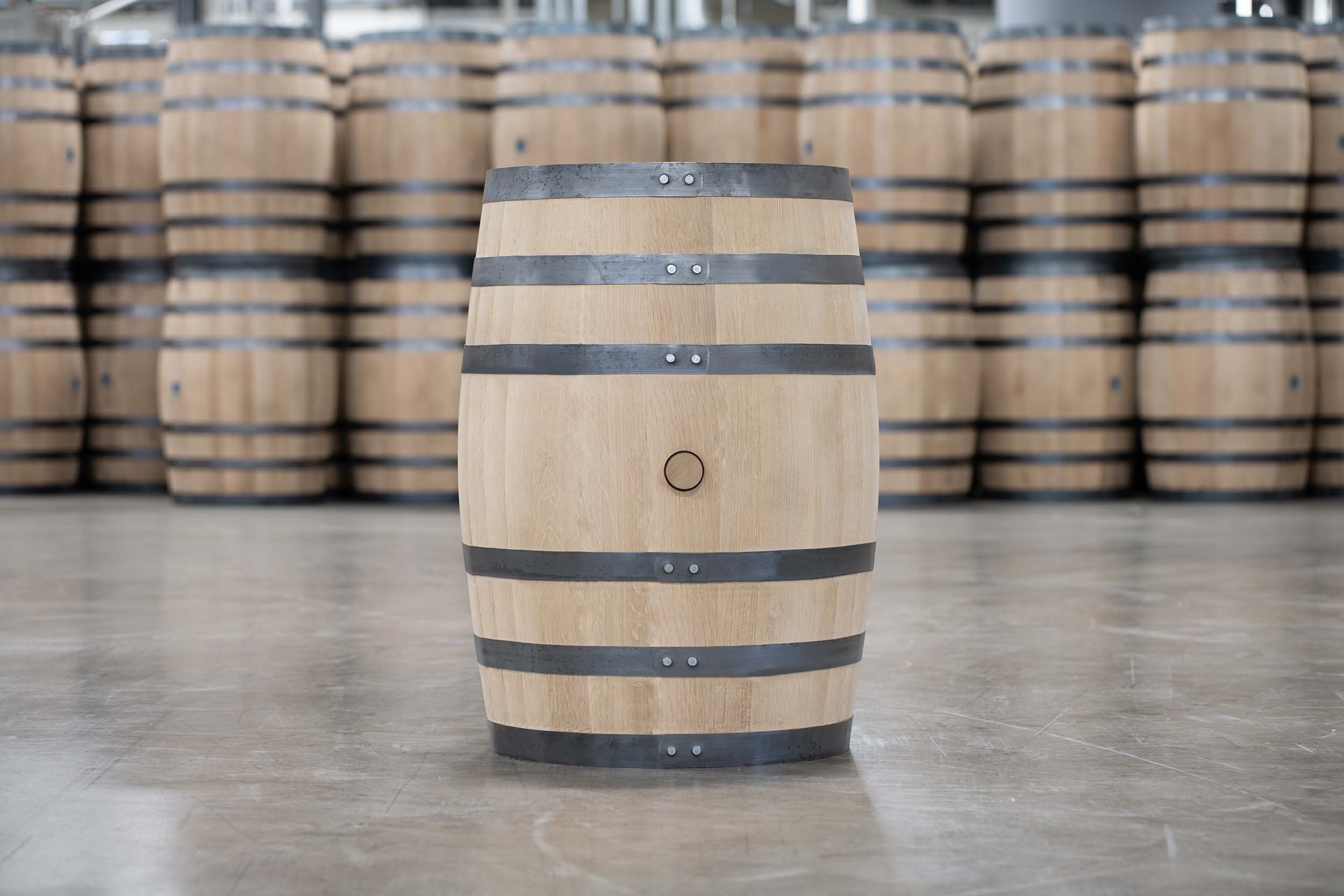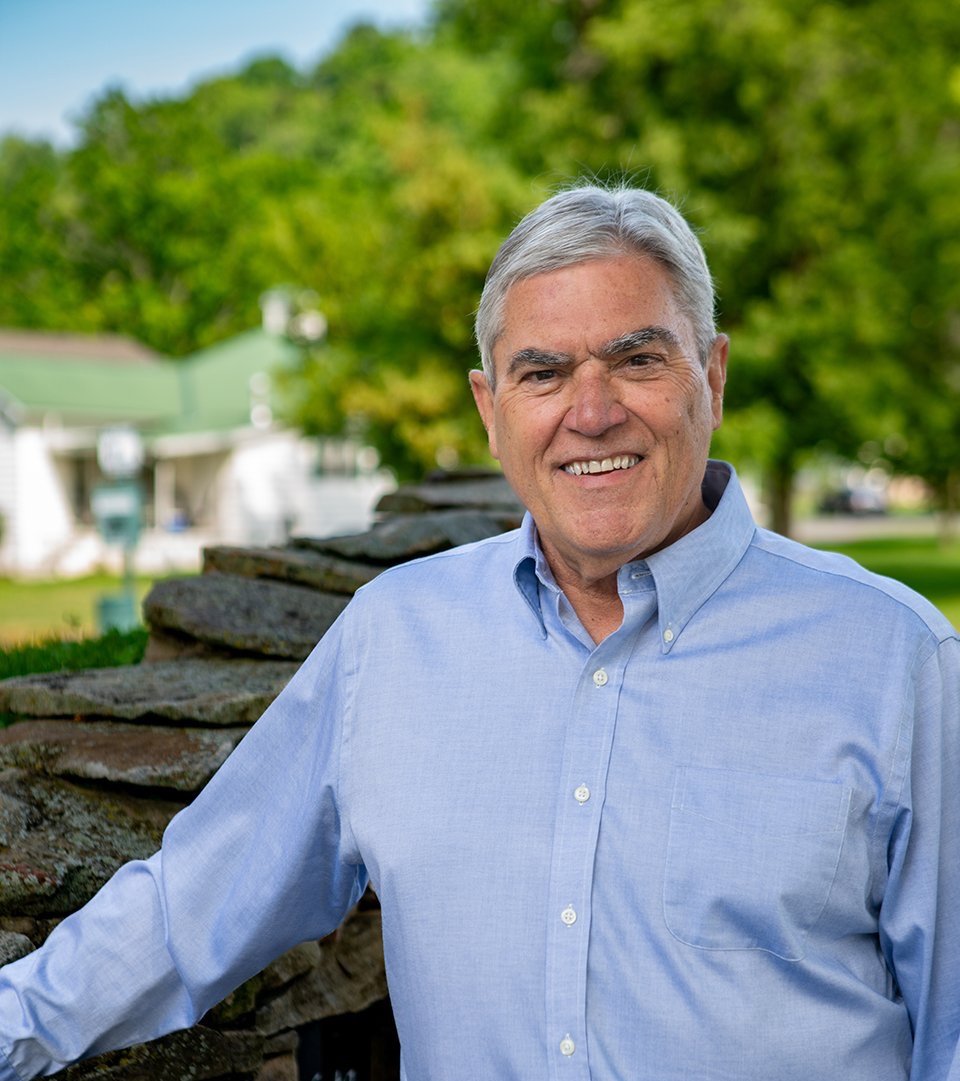Full Circle

Story By Cate Crabtree
Photos by Mark Trent
There’s something happening in White Sulphur Springs.
These days, this is a near-constant refrain that echoes through the valley.
But if you live in the Greenbrier Valley--if you call these beautiful mountain towns your home; or if you spend a good amount of time here in spring or summer; or if you’re here now--if you’re lucky enough to spend an afternoon winding through the familiar mauve and pine needle green and hay bale yellow of a late-year West Virginia landscape on your way to visit a downtown shop, a gallery, the new brewery, you know.
There’s nothing simply happening in White Sulphur Springs.
No. To say that something is happening implies that there is nothing behind the happening. No massive effort of years and work and fundraising and risk. No coming together of individuals with one common goal: to invest in their community.
If you spend any significant amount of time in this unreasonably beautiful part of the country, you know that what’s happening here is not an accident. And you also may know that it’s been happening for a long while.
If there’s one thing that I, a transplant to West Virginia, have learned from living and working in Greenbrier County for the past few years, it’s this:
If you want to make a real, positive impact on people’s lives, the best thing you can do is to start in the place where you are.
What’s happening in White Sulphur Springs? What has been happening in Lewisburg and the rest of Greenbrier County for the better part of thirty-five years? This very thing.
It all started with a road--a highway, actually. In 1988, when Interstate 64 replaced the Midland Trail as the primary east-west route for those passing through the area, a group of folks made a conscious effort to keep the town of Lewisburg vibrant, to keep it from being--literally--passed over. This group called themselves The Lewisburg Foundation. When native son TAG Galyean returned to West Virginia in 1990, the Foundation was already hard at work alongside the city and downtown merchants to create and beautify a historic district. Despite these efforts, by 1997, recalls Galyean, one-third of the storefronts of downtown Lewisburg were empty. And so Galyean, his wife Annabelle, and others infused new energy into the Foundation, spearheading efforts that eventually earned Lewisburg the designation of “Coolest Small Town” by Budget Travel Magazine in 2011.
During this time, Galyean was thinking hard about what small-town economic sustainability would look like in the 21st century.
“There are three motivating insights that I started thinking about in 1990,” Galyean remembers. For local business [in this area] to survive, it was necessary for there to be a better life and a better economy [for the people who live here]. For that to happen, we had to get into regional tourism.” (An architect whose bread and butter was resort design, TAG knew tourism.) “History, charm, culture, beauty, friendliness. This all attracts tourism.” But as a professional who lived in Greenbrier Valley but worked for hotels and resorts all over the world, he also knew that the key to building a local economy was local industry. “We needed to manufacture products that are exported nationally and internationally,” TAG says. “That’s the way we create jobs.”
And here’s where the idea for Smooth Ambler Spirits began. But it was also the spark of something that continues today: the possibility of a different kind of story coming out of West Virginia and Appalachia--and let me tell you, nobody loves a story like the whiskey industry. “We want what we do to be really first class, and to be known for that,” Galyean explains of the thinking behind Smooth Ambler. “For that, we invented ‘Appalachian Know-how.’” As hard work, a couple of amazing palates, and a little bit of luck would have it, a world-class reputation was in the cards for Smooth Ambler, most notably when it shot onto the international whisky scene with its recognition by Whiskey Magazine’s 2016 World Whiskies Awards, when Old Scout Single Barrel Bourbon was awarded “Best Single Barrel Bourbon in the World.” And once Smooth Ambler had the world’s attention, it stayed true to its roots, introducing the world to Appalachian Know-how.
So what is Appalachian Know-how? As TAG describes it, it’s a trait that once characterized the individuals who chose to stay and invest in Appalachia, rather than head west in the 19th Century. It’s a spirit of independence and taking pride in quality work. “To be able to make things and do it in an honest way--not just in Greenbrier Valley, not just West Virginia, but in all of Appalachia…,” Galyean says, “that is Appalachian Know-how.”
Inherent in Appalachian Know-how is a commitment to investing in one’s community. Which brings us to the part of the story when we need to back up and go down a different path of origin. One that began over five years ago with a natural disaster. Of course I’m talking about the flood. The day in June of 2016 when the rains came and did not stop, a day of immeasurable loss and tragedy for hundreds of families and their loved ones.
In a community like this, no one emerges from disaster unscathed. But what I’m really talking about--the truly remarkable part of that terrible event--is the way the community chose to come together to build itself back up. How, on the day after the flood, individuals--my father among them--driving through the devastation in White Sulphur Springs realized that the town would never recover if they didn’t do something to get residents back into homes, quickly. How this community came together, developed a plan, raised money, and partnered with the city to trade flooded lots for land on higher ground--in a new neighborhood they would name Hope Village. The way they engaged volunteer agencies who were already arriving to assist and gave them what they needed to stay long term: meaningful work and the funds for materials to rebuild homes. The way the first family moved into their new home by Thanksgiving. The way the flood recovery efforts in this community have been used as an example for other towns--small and large--ravaged by natural disaster.
And then there’s the way folks involved in the recovery realized that they needed to do more. As families began to settle into their new homes, the individuals involved in Hope Village acknowledged that if they really wanted to make a positive, lasting impact in this community, they needed to create good, safe jobs. Industry. A premium product that could be exported around the world, built using Appalachia’s own sustainable natural resource. A product of excellence that would bring recognition and pride to our region. Sound familiar?
“We began to look for an economic development project whereby we could encourage the community of donors to become a community of investors,” says Tom Crabtree, my dad, Co-Founder of Homes for White Sulphur Springs and the WV Great Barrel Company.
It didn’t take long to find the answer. By now, the story of the Christmas Dinner at the Greenbrier is legend. Smooth Ambler Co-Founder Greg Parseghian was celebrating the newly minted partnership with international spirits company Pernod Ricard. My father was sitting at the table. In telling the story of the partnership, Parseghian lamented the difficulty Smooth Ambler was facing with their barrel supply, at the same time they were being asked to increase their production. Something clicked. “We called TAG the next day,” Crabtree says.
It may not have been the first time it was suggested that someone build whiskey barrels in West Virginia, with its abundance of tight-grained white oak. But it was the right time.
And that’s where the idea for the WV Great Barrel Company was born.
As Crabtree and a group of founders embarked on the project, engaging industry consultants and engineers, they soon realized it wouldn’t be enough to just create jobs; they had to be safe jobs. It wouldn’t be enough to just build barrels; they had to be great barrels.
If we’re going to do it, they decided, let’s innovate the process. Let’s build the best-performing barrel on the market, but let’s do it safely. Let’s do it consistently. Let’s do it precisely.
So what does it mean to build the best-performing barrel on the market? “The key differentiators are our toast and our quality,” says Brett Wolfington, General Manager of the WV Great Barrel Company. By “toast,” Wolfington is referring to the Barrel Company’s use of infrared heat to prime the barrel before it’s charred--a practice that’s quickly gaining recognition in a tradition-driven industry as a way to age better whiskey. “Infrared toasting caramelizes the natural sugars deep in the wood and creates a reservoir of flavor and color that the whiskey can extract,” explains Wolfington.
“We’re focused on not only developing processes that can make a better-tasting whiskey, but also on developing processes that can keep more of it in the barrel as it matures,” Wolfington adds. And if buzz in the industry is any indication, the hard work is paying off. “The feedback is universally positive. We’ve been told we’re changing the game and we’re excited to continue to develop new and innovative products with our partners like Smooth Ambler and get them in the hands of consumers so they can taste the difference.”
The WV Great Barrel Company delivered their first load of barrels to Smooth Ambler on March 9, 2020. Today, they are shipping barrels to some of the largest, most well-respected distillers in the United States and all over the world. Fewer than two years in, they are well on their way to joining Smooth Ambler in offering the world a different kind of story coming out of Appalachia--a story about a premium product, hard work, pride of place, and a deep investment in community.
Some may say we’ve come full circle in this moment.
Remember the part of the story when I mentioned I-64 as the impetus for the community doubling down in Lewisburg? That didn’t happen in White Sulphur Springs in 1988, and the town suffered for it. But something did happen in 2016, mere hours after the flood. “The equivalent to the Lewisburg Foundation in White Sulphur Springs,” says Tom Crabtree, “is the community of people who donated to the flood recovery, invested in the Barrel Company, and now--in partnership with the Mayor and City Council--are investing in the revitalization of Main Street and White Sulphur Springs Infrastructure. Rather than a Foundation, it’s a community of people.” This, friends, is what’s happening in White Sulphur Springs.
“I think we are coming full-circle,” says TAG Galyean. “There is a synergy between making barrels, making whiskey, having restaurants and galleries. There is a synergy and I’m glad I lived to see it. “
Full circle. But the thing about a circle is, it has no end. There is no end to the work we do in our communities--no stopping point for the good, hard work we must do. In some ways, we’re only just beginning. As my dad would say, “We have miles to go before we sleep.” But he would also say, “How lucky are we?” This may only be the beginning. But what a start we have.








